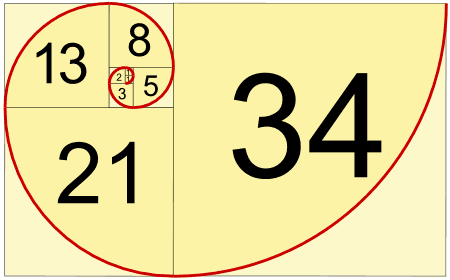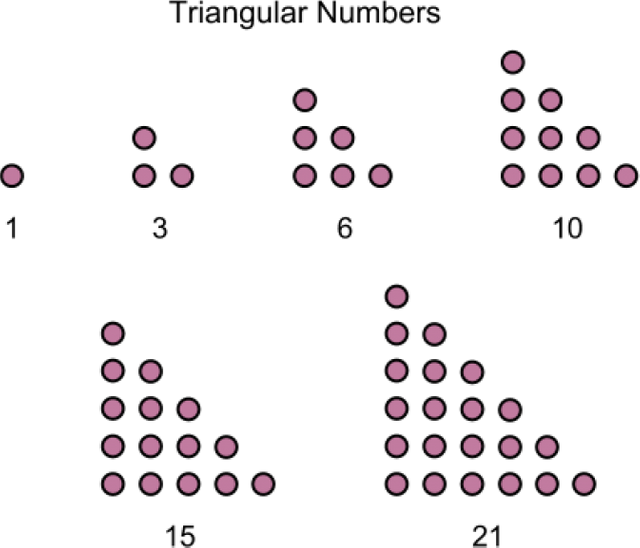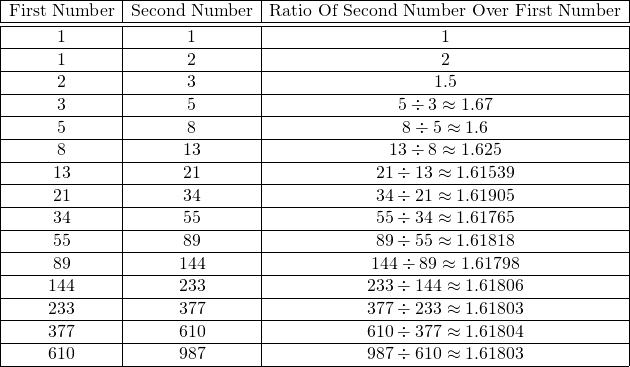Triangular Numbers & Fibonacci Numbers
Hi there. This patterning math post features triangular numbers and Fibonacci numbers.

Sections
- Triangular Numbers
- Fibonacci Numbers
- The Golden Ratio From Fibonacci Numbers
Triangular Numbers
To start, here is an image which features triangular numbers.

The first number is 1, the second number is 3 where the number 2 is added to 1. Adding 3 to the second number gives 6 and adding 4 to 6 gives the fourth triangular number. The pattern continues where the number that is added increases by one.
As you can see triangular numbers are based on the sequence:
1, 2, 3, 4, 5, 6, 7, ...Finding The N-th Triangular Number Formula
Let the variable N represents the N-th triangular number. To find the N-th triangular number you can use the formula:

Example One
The seventh triangular number can be found with N = 7 in the formula.

Example Two
The hundredth triangular number can be found with N = 100 in the formula.

Fibonacci Numbers
There is a neat pattern where the next number in a sequence of numbers depends on the last two numbers. This Fibonacci sequence of numbers is as follows:
1, 1, 2, 3, 5, 8, 13, 21, 34, 55, 89, ...In the number sequence we start with the numbers 1 and 1 as the first two terms. The next number in the sequence consists of adding the last two numbers together.
A more mathematical version would be as follows:

The Golden Ratio Approximation From Fibonacci Numbers
The golden ratio value of  can be approximated from the ratio of Fibonacci numbers. This ratio consists of two consecutive numbers where the second number is divided by the first number.
can be approximated from the ratio of Fibonacci numbers. This ratio consists of two consecutive numbers where the second number is divided by the first number.


Interesting
Patterns like this just shows the beauty of mathematics , glad to see people love mathematics here on steemit